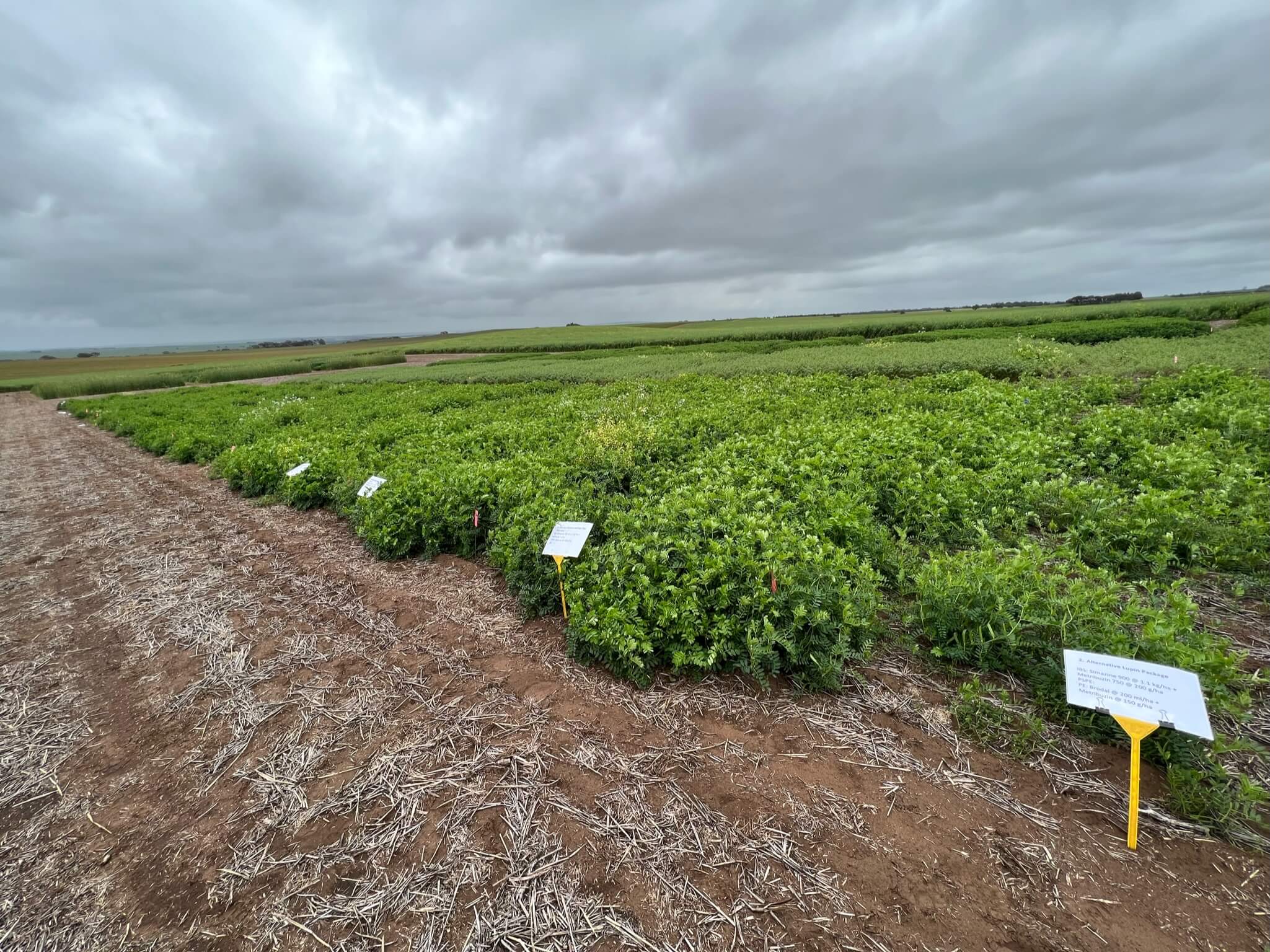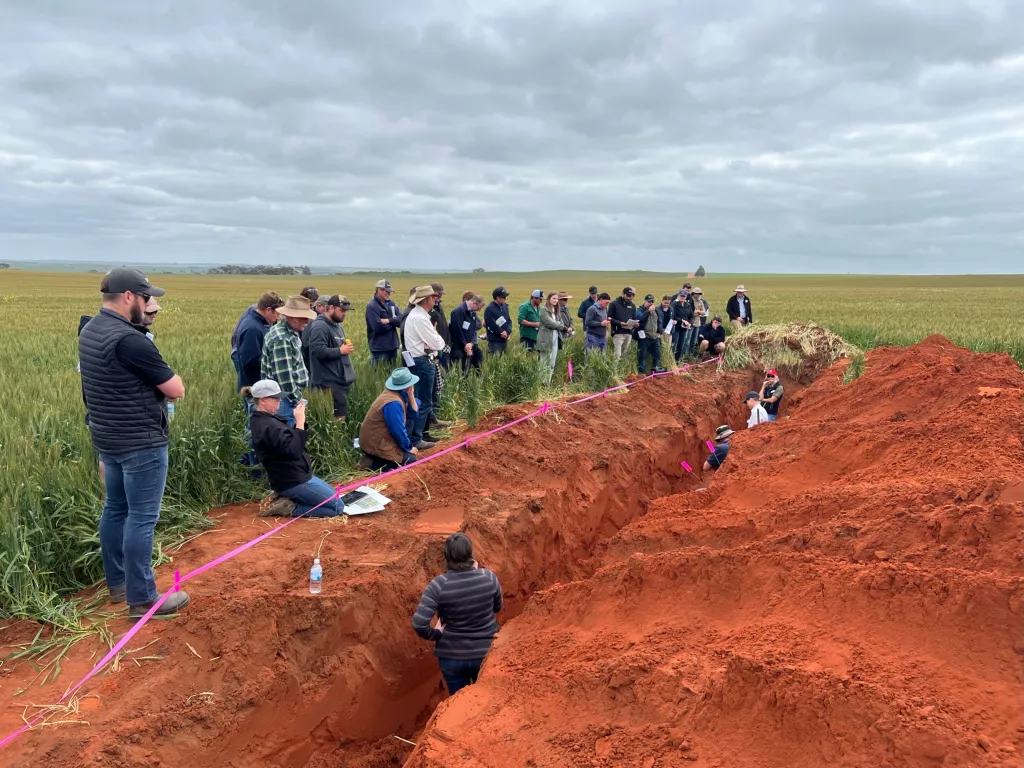Potassium Cycling, Availability and Crop Productivity
By Kate Parker, WMG Graduate Project Officer
When looking at potassium in soils of the West Midlands region, there is a trend on some farms for this mineral to reside in the lower levels of the soil, unreachable by traditional crops. Growers are interested in looking into how best to upcycle this mineral reserve to become usable in their cropping systems. WMG’s K Extension Project is exploring this and plans to look into different crops or cover crops and their effect on potassium.
The Critical Role of Potassium in Plant Health and Crop Productivity
Potassium is a mineral and essential nutrient in agricultural systems. It ranks highly against other minerals in mobility and solubility in plant tissues making it ideal in the movement of water, nutrients, and carbohydrates throughout a plant (Rosen 2018). Potassium acts as an accelerating enzyme for photosynthesis and reduces respiration, in turn preventing energy losses. It is vital in the growing points of a plant and in particular leaf development. The mineral has been labelled as a ‘poor man’s irrigation’ due to its importance in drought tolerance through its contributions to increases in root growth and regulation of internal plant moisture, preventing water loss in dry seasons (Srinivasarao et al. 2023). Grains with adequate potassium are shown to be rich in starch and protein as well as obtaining a higher resistance to crop diseases. Inadequate potassium is shown to stunt plant growth and negatively impact yield (Norton 2020).
Understanding the Potassium Cycle in Soil Systems
There are three forms of Potassium found in soils, each type contributes to a ‘potassium cycle’ which details how this mineral can become available to plant growth. ‘Unavailable’ potassium consists of primary minerals and makes up 90-98% of potassium in soils and exists in a crystalline insoluble form, unavailable for plant growth. This form breaks down overtime with some amounts becoming available for plant, however most breakdown into ‘fixed’ potassium. ‘Fixed’ potassium consists of secondary minerals and compounds and is trapped between layers of clay minerals making it unmeasurable by soil-testing. This form is slowly released from the layers into the third form, ‘Exchangeable’ potassium. ‘Exchangeable’ potassium exists as a solution of potassium, it is water soluble and is held on clay particle exchange sites making it measurable by soil testing. This form of potassium is usable for plant uptake. Growers can add potassium to the ‘exchangeable’ form for plant uptake through plant residues, mineral fertilizers, and animal manure/biosolids. Losses in soil potassium arise from leaching, runoff/erosion, and crop harvest. Areas of sandy soils with high rainfall are prone to potassium deficiencies due to poor holding and leaching into the depths of the soils (Rosen 2018; Marchuk 2016).

The Role of Deep-Rooted Plants in Enhancing Potassium Availability
In theory, plants with deep and extensive rooting systems would have an increased ability to bring up potassium into the higher layers of subsoils. French serradella is shown to have deep and rapid establishment of a rooting system thus, a higher ability of surviving ‘false break’ and spring moisture stress (Plitz 2013). Fodder radish is able to bring potassium up to topsoil levels and upon destruction will release the nutrients for the following crop however, these nutrients are still subject to leaching and the paddock would lose production for the year (PDA, 2023). Alfalfa is also able to bring up potassium from the subsoil in levels of up to 67% through it’s deep root system (Witter and Johansson 2001). These studies have been done on pasture based systems but for those in cropping systems there is insufficient knowledge available in any given crops ability to contribute to a potassium upcycle. WMG will be looking into this in the coming year through the K Extension Project.
Currently, there is limited information on the uptake of subsoil nutrients due to inherent complexity of variable topsoil K contributions under different conditions and limited methods of subsoil investigation (Ma et al. 2022). Multiple study’s show inconsistent root depth results across different regions leading to a belief that more research is required on this subject. WMG are aiming to illustrate results specific to the West Midlands region for a more personal data set when looking at a plants ability to upcycle K from depth.
References and More Information:
- Ma, Q, Bell, R, Scanlan, C, Neuhaus, A (2022) Long-term rundown of plant-available potassium in Western Australia requires a re-evaluation of potassium management for grain production: a review. Crop and Pasture Science73, 981-996.
- Marchuk, S (2016) The Dynamics of Potassium in some Australian soils. University of Southern Queensland.
- Norton, R (2020) ‘Potassium and sulphur – emerging deficiencies in the southern region.’ Available at https://grdc.com.au/resources-and-publications/grdc-update-papers/tab-content/grdc-update-papers/2020/02/potassium-and-sulphur-emerging-deficiencies-in-the-southern-region2
- PDA (2020) ‘Crop root systems explain need to maintain K index level.’ Available at https://www.pda.org.uk/crop-root-systems-explain-need-to-maintain-k-index-level/
- PDA (2023) ‘Impact of Catch and Cover Cropping on Potassium Cycling.’ Available at https://www.pda.org.uk/impact-of-catch-and-cover-cropping-on-potassium-cycling/
- Plitz, BHCRJ (2013) Using French serradella to increase crop and livestock production. Meat & Livestock Australia. Available at https://www.mla.com.au/globalassets/mla-corporate/extensions-training-and-tools/documents/mlalpi222.pdf
- Rosen, DEKCJ (2018) ‘Potassium for crop production.’ Available at https://extension.umn.edu/phosphorus-and-potassium/potassium-crop-production#:~:text=Potassium%20in%20soils,growth%20at%20any%20one%20time
- Srinivasarao, C, Kundu, S, Rao et al. (2023) Chapter Two – Soil potassium fertility and management strategies in South Asian agriculture. In ‘Advances in Agronomy.’ (Ed. DL Sparks.) Vol. 177 pp. 51-124.
- Witter, E, Johansson, G (2001) Potassium Uptake from the Subsoil by Green Manure Crops. Biological Agriculture & Horticulture – BIOL AGRIC HORTIC19, 127-141.
- WOODHOUSE, PJ, WILD, A, CLEMENT, CR (1978) Rate of Uptake of Potassium by Three Crop Species in Relation to Growth. Journal of Experimental Botany29, 885-894.













